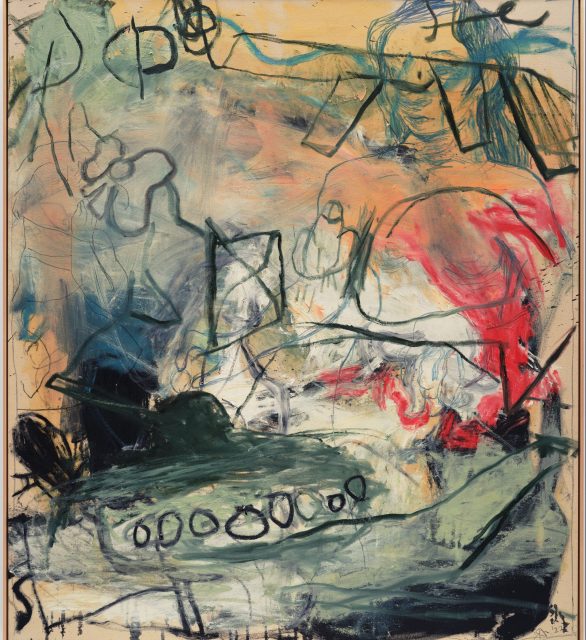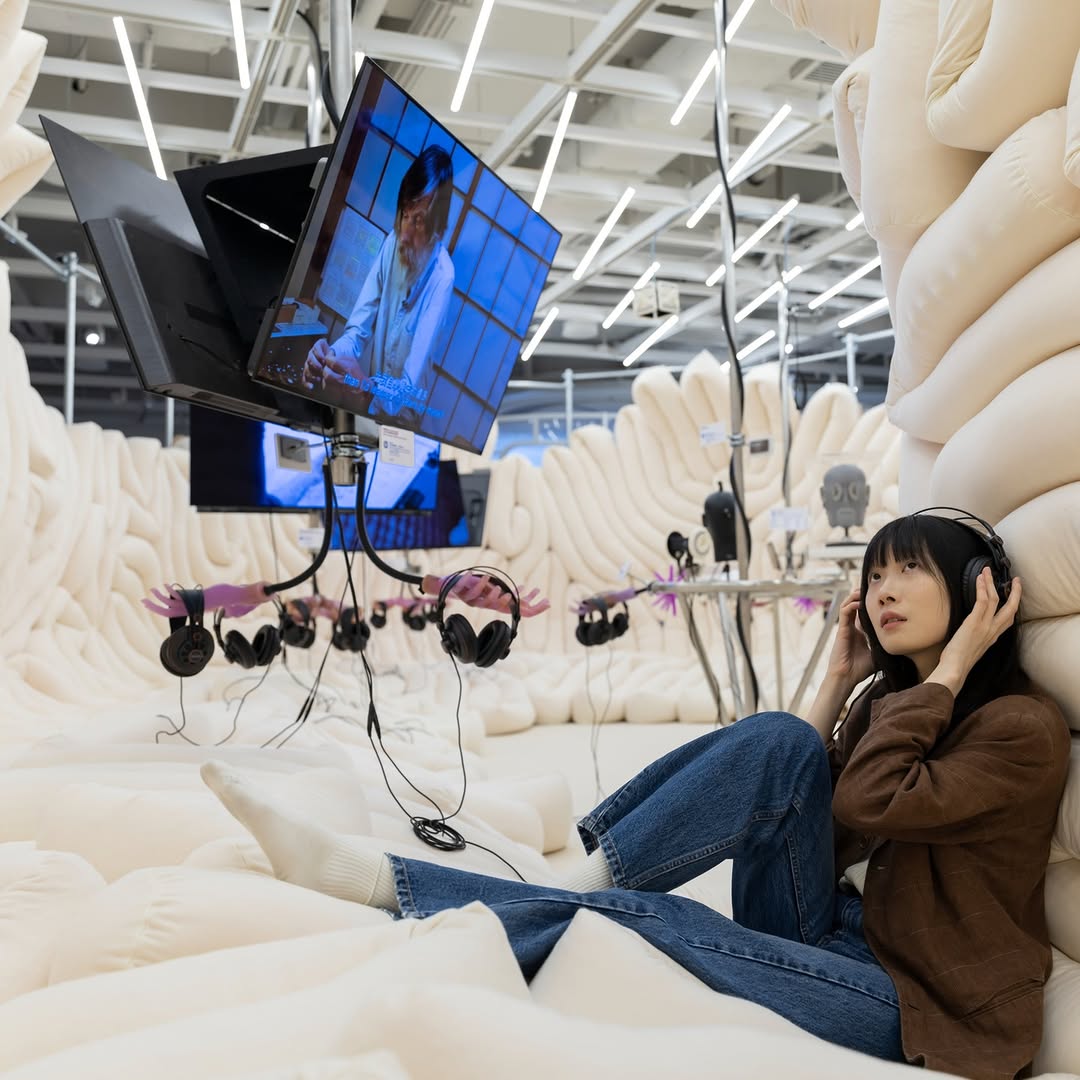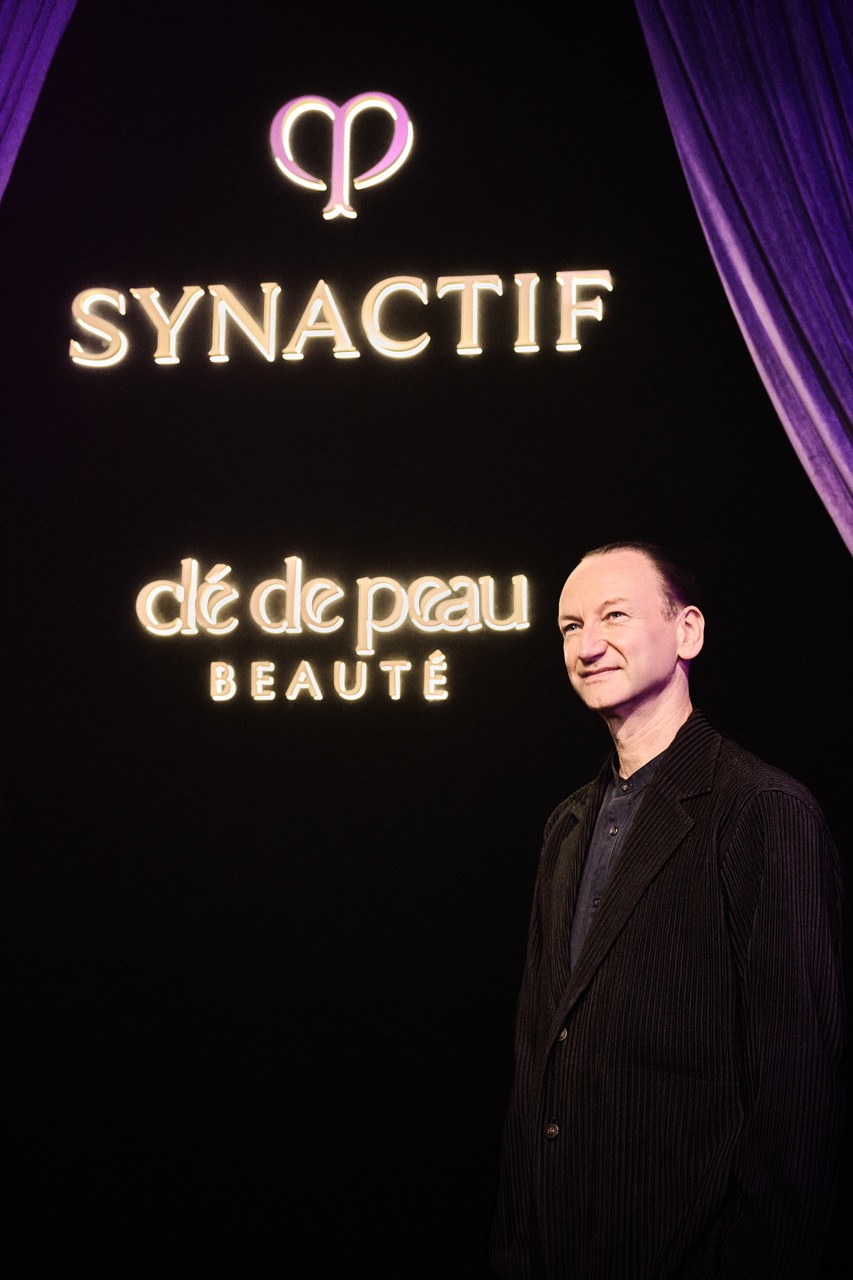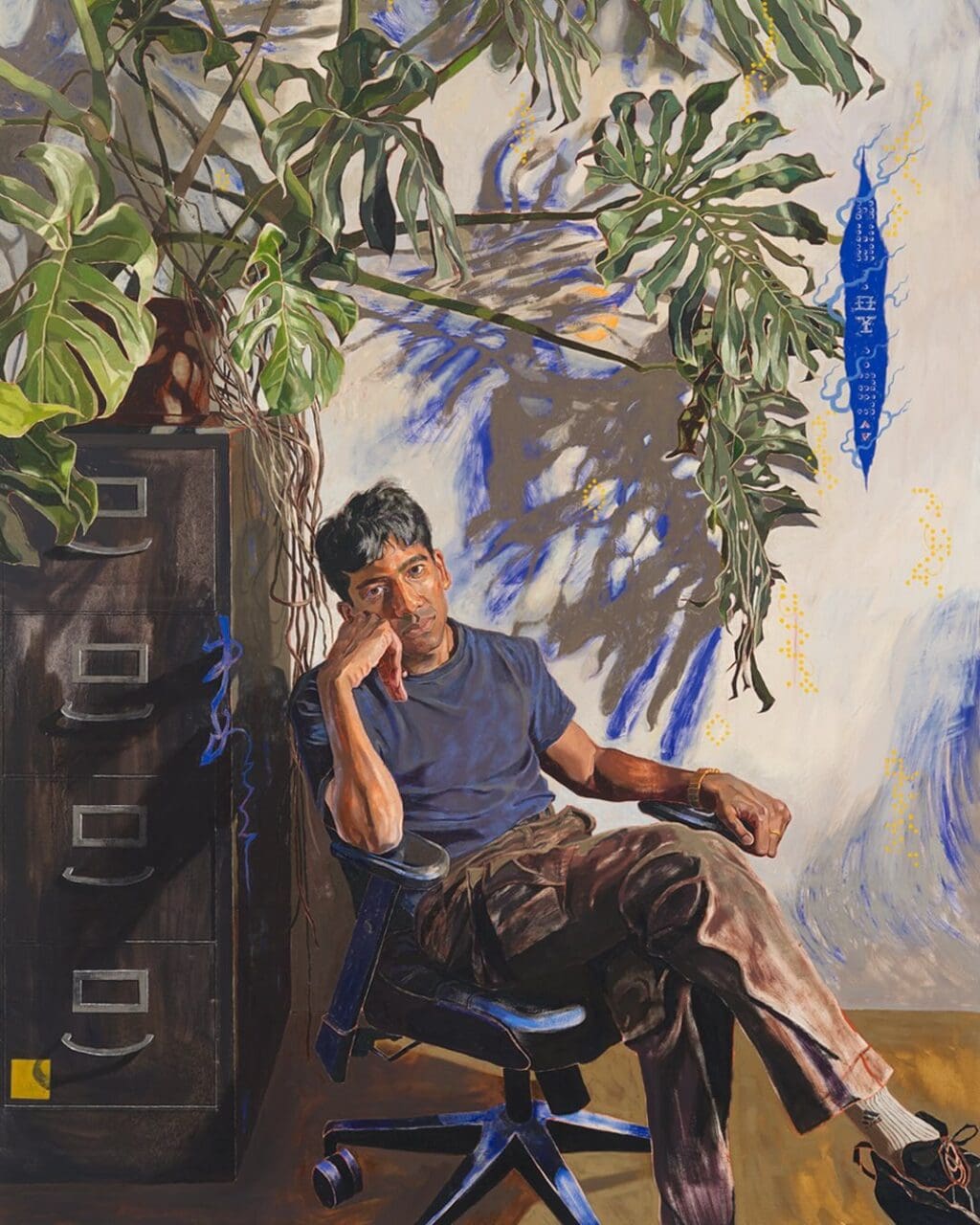The beauty of art lies in its constant innovation. As time changes, new insights emerge, giving rise to exceptional ideas that have never been seen before — the works on display at this year’s Art Basel “Discoveries” sector are prime examples. Step into a new era of art through the eyes of these six emerging artists.
Kawita Vatanajyankur |Nova Contemporary
Scale of Injustice (2021), Kawita Vatanajyankur.
Courtesy of the artist and Nova Contemporary
In an era of intelligence marked by consistent technological advancement, more and more occupations become replaceable by machines. It begs the question: Should the value of human labour also be redefined? Bangkok-based gallery Nova Contemporary presents Thai artist Kawita Vatanajyankur’s ongoing ‘Field Work’ series, a five-channel video installation that examines the future of agriculture in the age of machine learning. The artist explores the concept of ‘transhumanism’, looking at both the benefits and potential harms of emerging technologies through the lens of agriculture. Advancements in science and technology provide the industry with convenience, but in the near future, will machines completely take over manual labour, thus depriving farmers of their jobs? In the face of such disruptive social change, how should workers protect themselves?
Kenneth Tam | Commonwealth and Council
Silent Spikes (2021), Kenneth Tam.
Courtesy of the artist and Commonwealth and Council
How should masculinity be defined? Commonwealth and Council returns to Art Basel Hong Kong with ‘Silent Spikes’, a dual-channel video installation by Chinese-American artist Kenneth Tam, that draws on “Western Cowboy” culture to reexamine the social stereotypes of men. The artwork’s title refers to a chapter in Chinese history that is often overlooked, namely, an organised strike of thousands Chinese labourers working on the construction of the U.S. Transcontinental Railroad in the Sierra Nevada Mountains. In 1867, these workers, many of them from the Canton region, staged a strike demanding equal pay to their white counterparts, thus rewriting their fates as a marginalised people. With actual recorded footage of the event, Tam hones in on this historic moment to demonstrate that masculinity can exist in larger, more diverse forms than the Western Cowboy, who are often painted as heroes and the pinnacle of masculinity in American culture.
M. Pravat | Vida Heydari Contemporary
Vida Heydari Contemporary arrives in Art Basel Hong Kong for the very first time, presenting ‘Concrete Dusk’ by Indian artist M. Pravat. As the name suggests, the exhibition showcases mixed media artwork made from bricks, tiles, wood, and other materials essential to building a city. In his artist statement for Concrete Dusk, Pravat says, “My interest in this subject comes from the lived experience of a city that is in a constant state of flux, both tangible and intangible… One is in the middle of these transformations, be it from the intimacy of one’s home or on larger scales of urban development projects.” The works in this exhibition are a collection of the artist’s reflections over the past decade. Initially taking an interest in under-construction sites, Pravat has since shifted his focus towards architectural remnants and the afterlife of structures, provoking discourse surrounding the progress of human civilization as a whole. For Pravat, red bricks are symbolic of past civilisations as the use of brick and mortar in building today’s cityscapes. Through Concrete Dusk, the artist’s use of building materials from different eras initiates a dialogue between past and present.
Sydney Shen | Gallery Vacancy
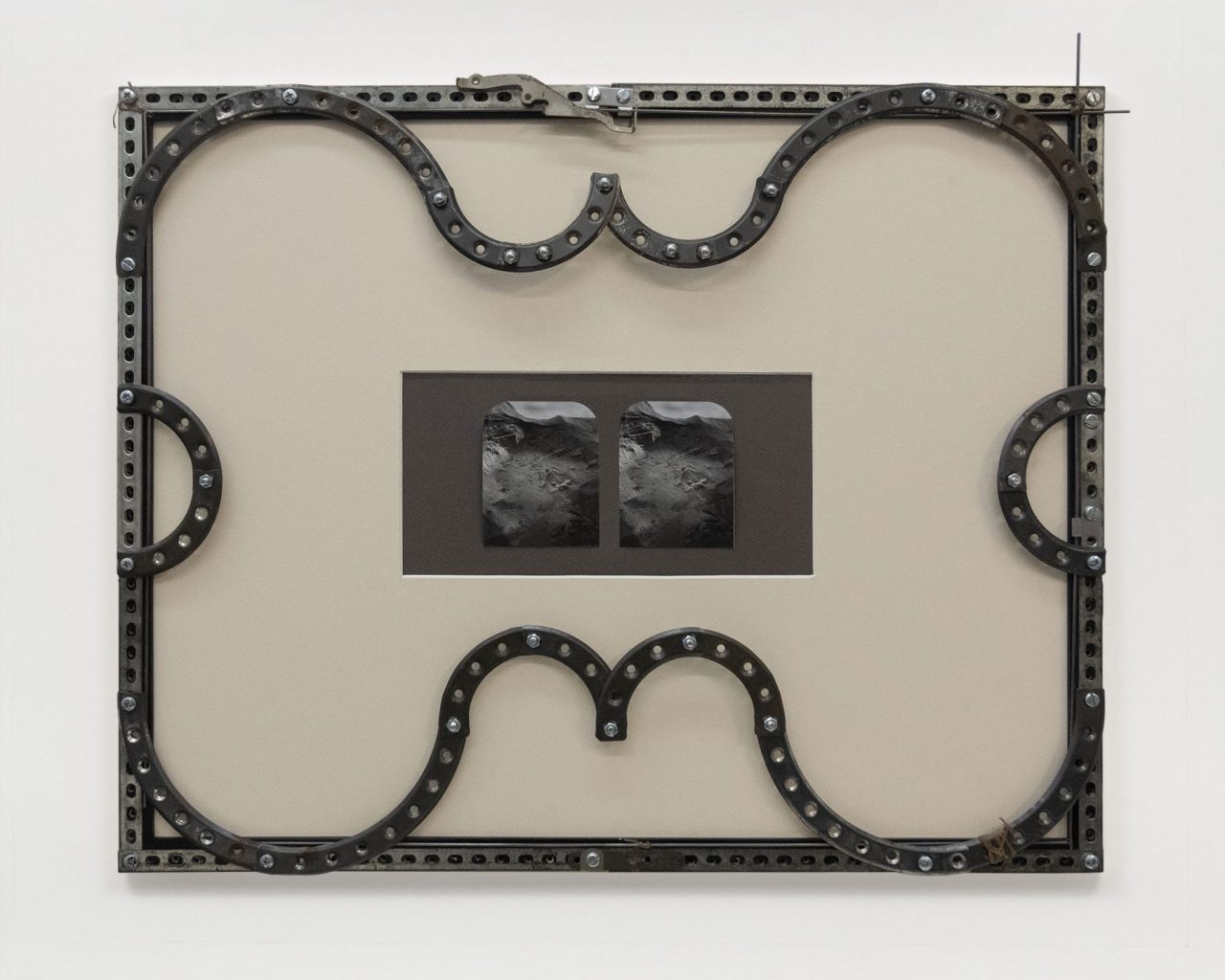
Six Non-Natural Necessary Things (Hairties on Mt. Everest #1)(2023), Sydney Shen.
Courtesy of the artist and Gallery Vacancy
Gallery Vacancy from Shanghai introduces “First Chair”, a mixed media installation project by Chinese-American artist Sydney Shen. Made especially for Art Basel Hong Kong, the exhibition comprises a series of works that draw the line between a structured society and utopian revelry through the reinvention of common amusement park facilities. Nowadays, amusement parks are scattered across various cities, providing cityfolk with an escape from reality and a place to simply have a good time. Inspired by the 3D stereoscopic photography that emerged from the Victorian era, one of Shen’s artworks captures the essence of high-speed roller coasters through images of a floor littered with hair ties. The title ‘First Chair’ simultaneously references the significant position of concertmaster within a symphony orchestra, and a child’s first chair after they have learnt to sit and stand— symbolic of humankind’s first steps beyond an animalistic playground ruled by natural instincts, and towards a civilised and disciplined society.
Victor Ehikhamenor | Retro Africa Gallery
A BRAND NEW CHIEF (2021), Victor Ehikhamenor.
Courtesy the artist and Retro Africa
A country’s history does not fade with time. Rather, it is deeply ingrained in the local culture. For its Art Basel Hong Kong debut, Retro Africa Gallery brings a series of artworks by Nigerian-American writer and artist Victor Ehikhamenor. Titled ‘Always At the Edge’, Ehikhamenor’s exhibition reveals the impact of Africa’s historical ties to Europe that extend to the present day. Portraits crafted from coral beads are based on the artist’s real-life narratives, imbued with elements of Catholicism and the local colours of Benin, a country in West Africa. At the same time, Ehikhamenor draws inspiration from the famous Hong Kong literary figure, Leung Ping-kwan, as both artists place an importance on cultural preservation and history. It is Ehikhamenor’s belief that in the face of changing times, it is only through continuous creation that history and culture can live on in the hearts and minds of people. His works themselves are an opportunity to learn about the easily overlooked chapters of contemporary African culture.
Hyunsun Jeon | GALLERY2
GALLERY 2 will present ‘Truly Madly Deeply’, a series by emerging Korean artist Hyunsun Jeon. Specialising in watercolour, Jeon brings together a vast array of imagery onto a single canvas—from flora and fauna to two dimensional geometric patterns and 3D objects—disrupting all inherent visual logic and delving into the myriad possibilities of her chosen medium. The artist’s unique style is also reflected in the way her artworks are displayed; rather than simply mounting her paintings at eye-level, Jeon opts for unconventional positions that redirect the viewer’s eyes to get a better sense of its artistic conception. Primary and secondary focal points are also often indistinguishable in Jeon’s paintings, as her landscapes forego horizon lines and discernible depths of field. Instead she describes her masterpieces as interwoven images that are constantly disintegrating and being reborn.
Translated by Alyanna Raissa J. Payos










